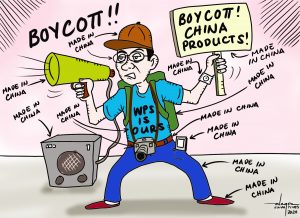Garbage is a major environmental issue. In the recent Eco Summit 2020 held at the Ateneo de Davao University last Friday, the city reported solid waste that end up in the sanitary landfill has increased from 602 tons a day in 2017 to 614 tons a day in 2019, or an additional 12 tons a day.
The campaign to keep garbage to the minimum by encouraging barangays to develop their own materials recovery facility or even segregation at source, meaning each household has to maintain a biodegradable and non-biodegradable bins, may not have fully taken off. Household wastes are all dumped together then taken by garbage collectors to be disposed at the sanitary landfill. The work of segregating wastes that can be recycled are now done in the landfill by those who make a living out of trash.
If we only learn to comply with our laws, we would be in a good place. The city passed the Ecological Solid Waste Management Ordinance of 2009 that provides for the compulsory sorting of solid wastes at source by all waste generators, as well as the establishment of barangay-based materials recovery facilities. It also bans the use of non-biodegradable plastic bags and polystyrene, or styrofoam as food containers.
There is also a strong movement to ban single-use plastic which the environmental group Interface Development Interventions (IDIS) claim to comprise 29 percent of the total non-biodegradable waste. Section 10 of the local law also states that “only recyclable, biodegradable or reusable containers are allowed to be used as a food and beverage containers.”
So how do we solve this perennial problem on trash? We have been suffering from the reckless disposal of garbage for decades. Our seas are polluted by too many plastics and wastes washed from the rivers that gush out to the Davao Gulf.
It takes each one of us, each household and community to help solve the garbage that plagues our environment and ultimately, us.

